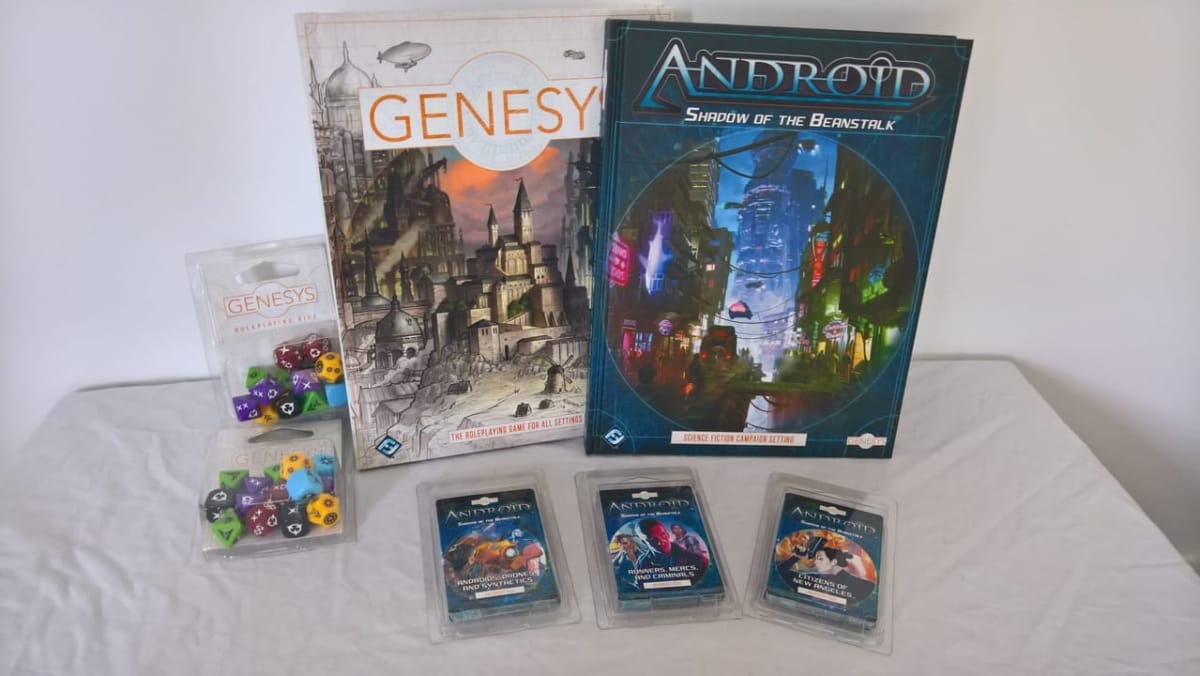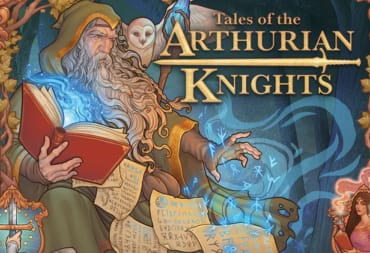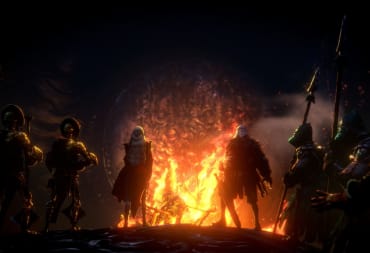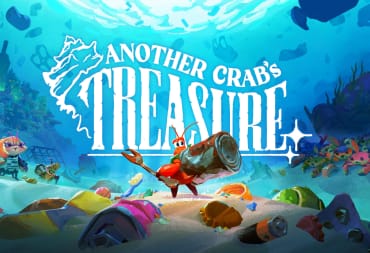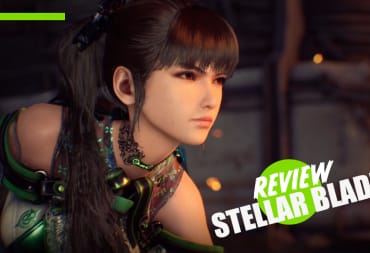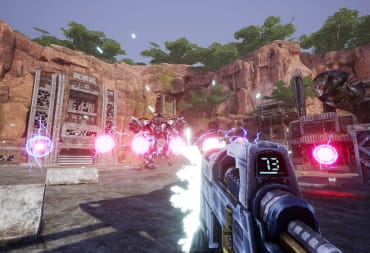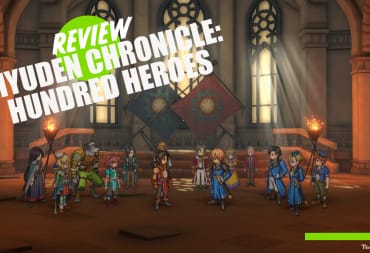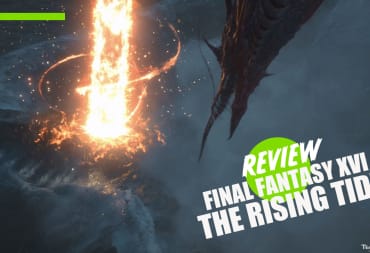We decided to look at a roleplaying game (RPG) for our next On The Tabletop report. For this report we chose Fantasy Flight Games' (FFG) brand new sourcebook for their Genesys RPG, Shadow of the Beanstalk.
The Genesys RPG is FFG's narrative focused RPG system. The core Genesys rulebook allows you to play roleplaying games in any setting you wish, like fantasy or sci-fi, cyberpunk or horror, and the emphasis is on a narrative experience rather than a stat driven roleplaying game. Shadow of the Beanstalk is a sourcebook that focuses on a single setting under the Genesys rules, and that is the worlds of Android, most famous for the Netrunner card game.
Off The Shelf / On The Tabletop articles come in two halves. In Off The Shelf we will look at what's in the product along with covering how the game plays. This is followed by On The Tabletop where we talk about our first playthrough games and finish with feedback from the On The Tabletop team.
The On The Tabletop playthrough articles catalogue our initial experiences with a game; as a result, mistakes will be made. On The Tabletop should also not be taken as a full review. These articles are simply our first impressions of a game.
Off The Shelf
[gallery size="large" ids="284571,284572,284573"]To play Shadow of the Beanstalk, the Games Master (GM) needs access to a copy of the Genesys RPG core book. This details the rules for the system. The Shadow of the Beanstalk sourcebook expands the setting and rules presented in the Genesys core book and includes details of the city of New Angeles along with creating characters and the rules for them and equipment within the setting. Players will also need access to the Genesys dice, which we'll go over in more detail later. This can be either through a physical dice pack purchase, or with the official Genesys dice app.
[gallery columns="2" size="large" ids="284574,284575"]
Shadow of the Beanstalk also has 3 Adversary Decks available for GMs. Runners, Mercs and Criminals, Androids, Drones and Synthetics and Citizens of New Angeles. Each pack contains 20 cards with the stats and information for different adversaries players may come across during games of Shadow of the Beanstalk.
These three decks aren't an essential for purchase, as GMs could easily make up the stats and details contained in the decks, but they do make for easy reference if you need details of a non-player character (NPC) on the fly.
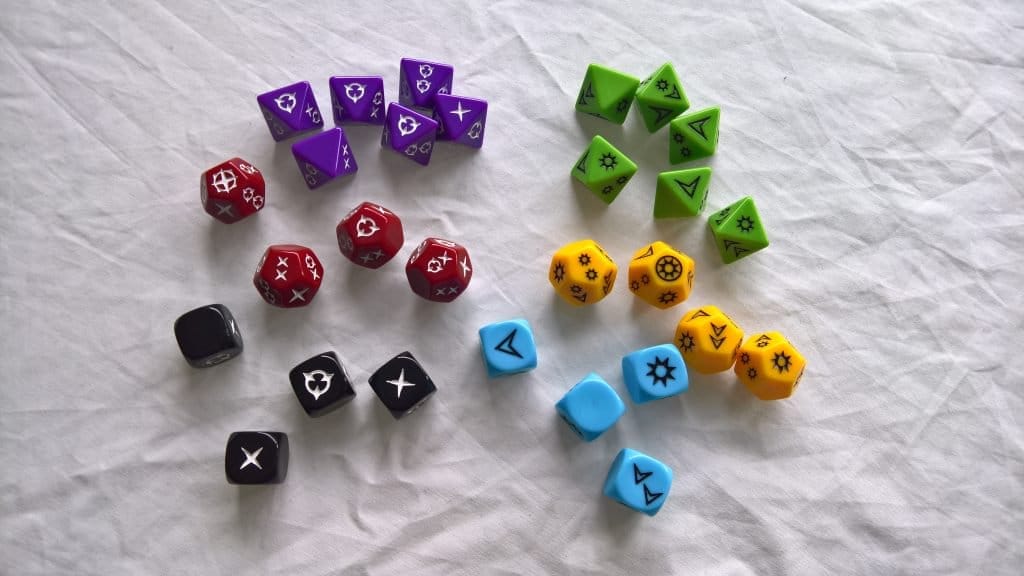
The Genesys system is a narrative driven RPG system. What that means is that when the dice are rolled, there are a variety of different ways to interpret them. Maybe you fail the task, but you find out something useful. Maybe you achieve the task, but are injured during the process, or maybe you fail the task and reveal a weakness to an enemy. The difference with this and a stat based RPG system is that you can easily interpret scale of failure or success. We'll go into more detail about the dice and how the system works throughout this article.
To make a test roll in the Genesys system, a dice pool is created. There are 6 types of dice used in games, 3 positive and 3 negative. The positive dice are Ability, Proficiency and Boost and the negative are Difficulty, Challenge and Setback. We're going to use the same example throughout our dice pool description here, and that is our character Kim, who is trying to shoot at an enemy running towards her.
To create the positive side of the dice pool, players work out which Skill they will be using, and which aptitude it comes under. In our example Kim would be using the Ranged skill, which comes under Agility. To create the dice pool, players look at the number they have in both the skill and aptitude. Kim has 4 in Agility and 1 in Ranged. The highest number is used to create the pool, which in this case is 4. Kim would take 4 Ability dice (which are green). The next phase of the dice pool creation is to upgrade a number of dice to the lower number of Skill/Aptitude, which in our case is 1. So 1 of Kim's 4 Ability dice are upgraded to Proficiency dice (which are yellow).
This gives Kim 3 Proficiency dice and 1 Ability dice in her pool.
[gallery columns="2" size="large" ids="284615,284616"]
The next stage is to add Difficulty dice (which are purple). A number of Difficulty dice, between 1 and 5 are added depending on the difficulty of the task. Shooting a target at point blank range, with your weapon pressed against your opponent would add 0 dice to the pool, short range would add 1, medium 2, long 3 and extreme 4. A 5 dice Formidable check would be shooting at a moving, invisible target at extreme range. These Difficulty dice can be upgraded to Challenge dice (which are red) through actions and abilities available to the NPCs and adversaries the players may face.
Kim is shooting at a target at short range, so we add 1 Difficulty dice to our pool, which isn't upgraded to include any Challenge dice. Kim's pool now has 3 Proficiency, 1 Ability and 1 Difficulty dice.
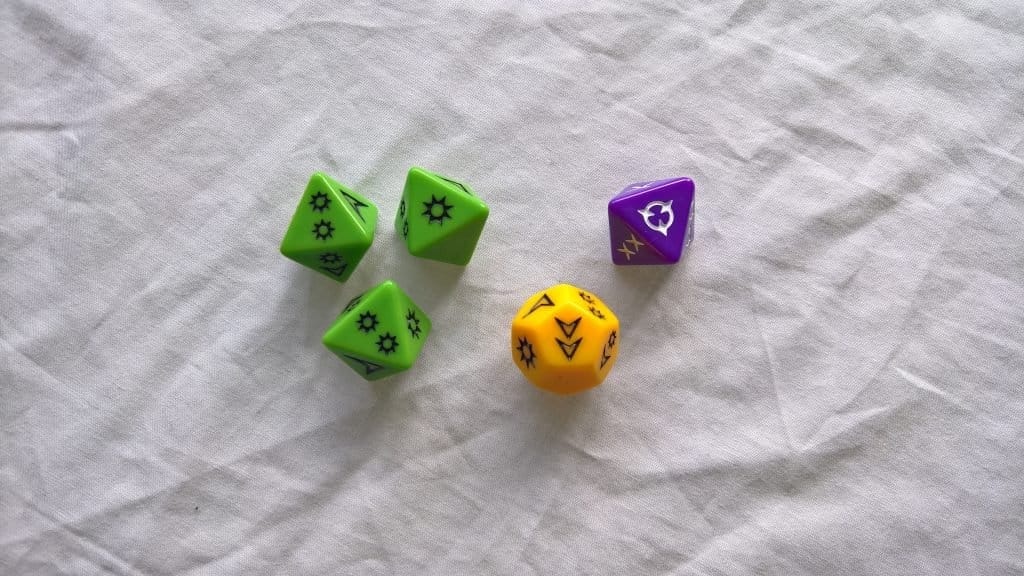
Boost and Setback dice are added throughout the game, and can be because of the actions of other players, equipment or in game effects.
In our example, we'll say that the enemy running towards Kim has activated a form of camouflage suit, which adds 2 Setback dice to her roll. But Kim has spent some time before the shot taking carful aim, which gives her 1 Boost dice.
Kim's pool for the roll is 3 Proficiency, 1 Ability, 1 Boost, 1 Difficulty and 2 Setback dice.
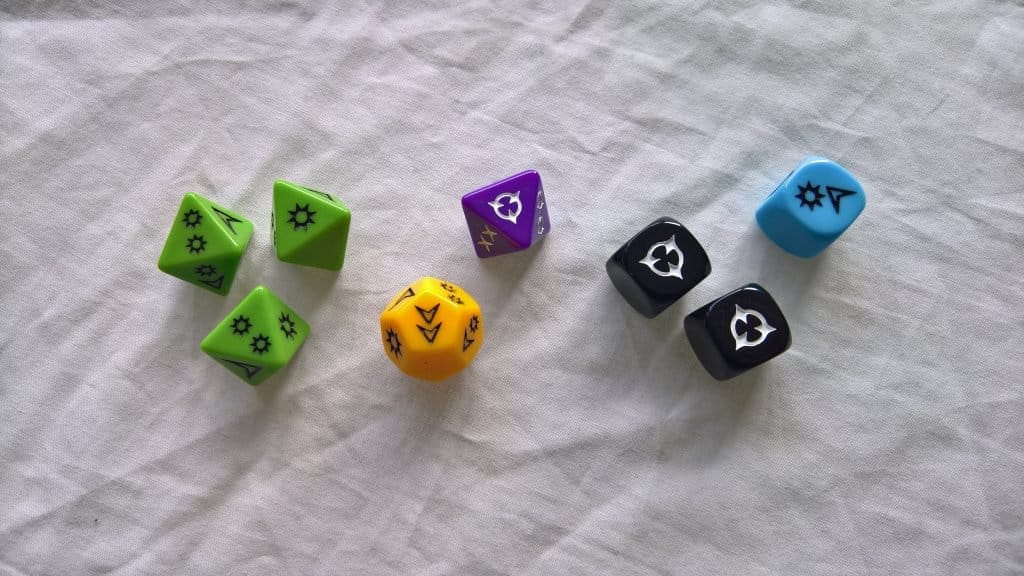
Once the dice pool has been created, all of the dice are rolled together and the results interpreted.
The positive dice have 3 symbols on them and the negative dice have 3 symbols that are the opposites. Positive dice have Success, Advantage and Triumph. Negative dice have Failure, Threat and Despair.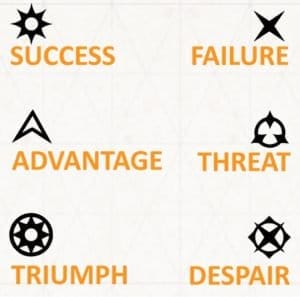
Success symbols are cancelled out by Failure. If at the end of the roll, at least one Success is present, then the roll is successful. Advantage and Threat cancel each other out and if any of one type of symbol remains at the end, it can be used. Advantage can be spent by the players and Threat by the GM for effects like boosting a players next roll, finding out some information or damaging a piece of equipment.
Triumph and Despair can be used by the players and GM to trigger special effects like critical injuries or activate character abilities.
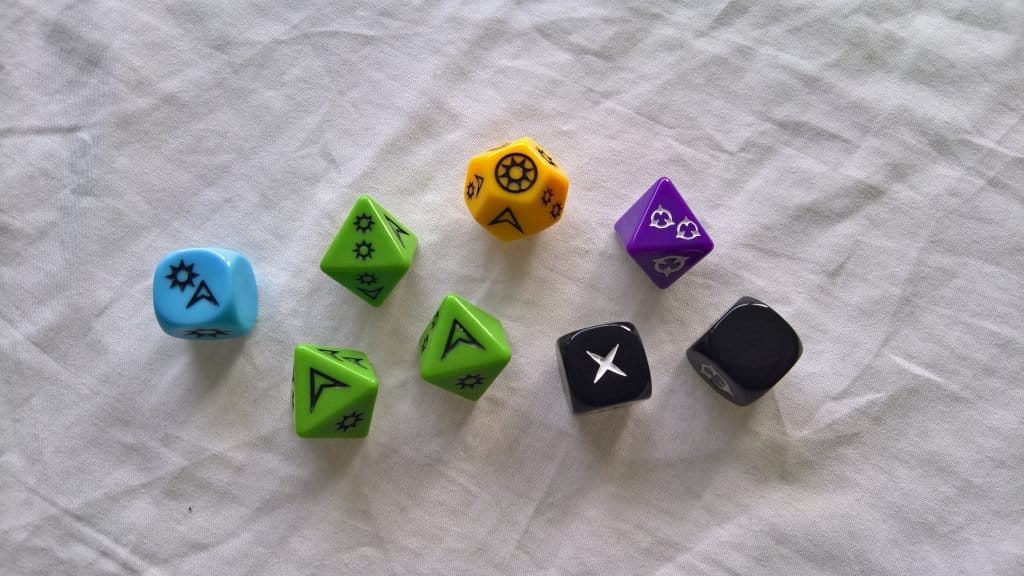
In our example above, with Kim firing at her opponent. After rolling her dice pool she has:
- 1 Triumph
- 3 Success
- 3 Advantage
- 1 Failure
- 2 Threat
- 1 Triumph
- 3 Success
- 1 Advantage
Our narrative interpretation of this would be that taking the time to brace and aim her weapon, she manages to precisely clip her enemy, knocking him back off their feet, making them an easy target for the next character's shot against them.
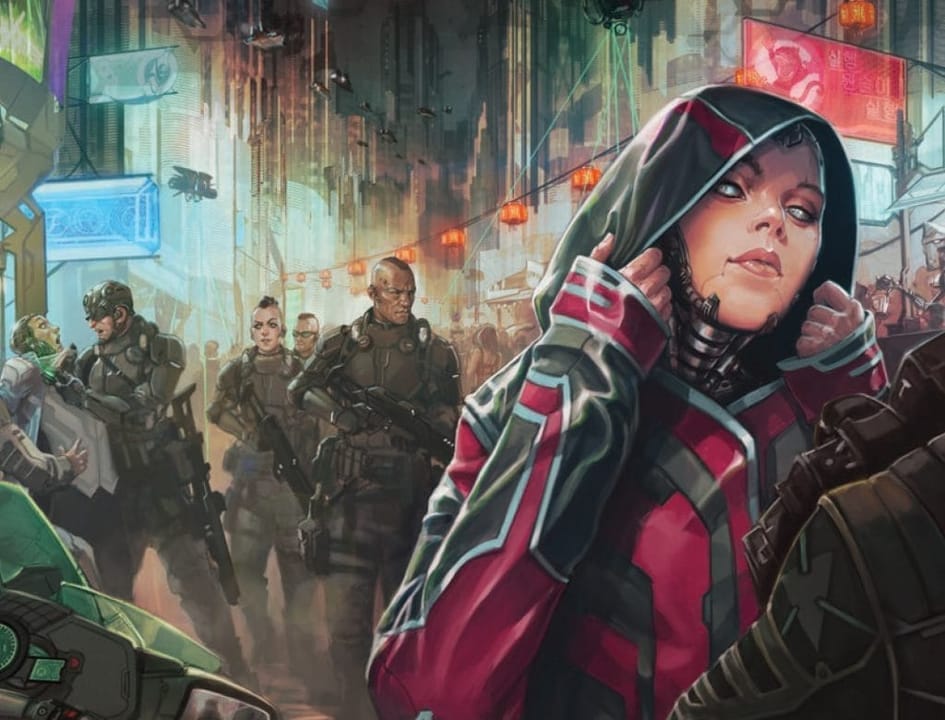
There are a few other tools in the Genesys RPG system, but the core of the mechanics are the dice pool and the narrative interpretation of the dice.
The Genesys core rulebook can be used for any setting and includes examples of six settings and six tones to get you started.
The Shadow of the Beanstalk sourcebook includes specific character creation for Android setting characters, along with equipment, fully fleshed out rules for hacking (which are detailed in the core-rulebook but appear in much more detail here) and a full source guide for the city of New Angeles.
The worlds of Android are a futuristic cyberpunk setting, where humanity lives on Mars and the Moon, as well as Earth. Clones, cyborgs and bionic upgrades are normal and the Beanstalk is a giant transportation pipe that links Earth to the Moon. The Android setting is famous for the Netrunner card game, and hacking is a fundamental part of the game, and it aims to fit hacking seamlessly into combat and social encounters.
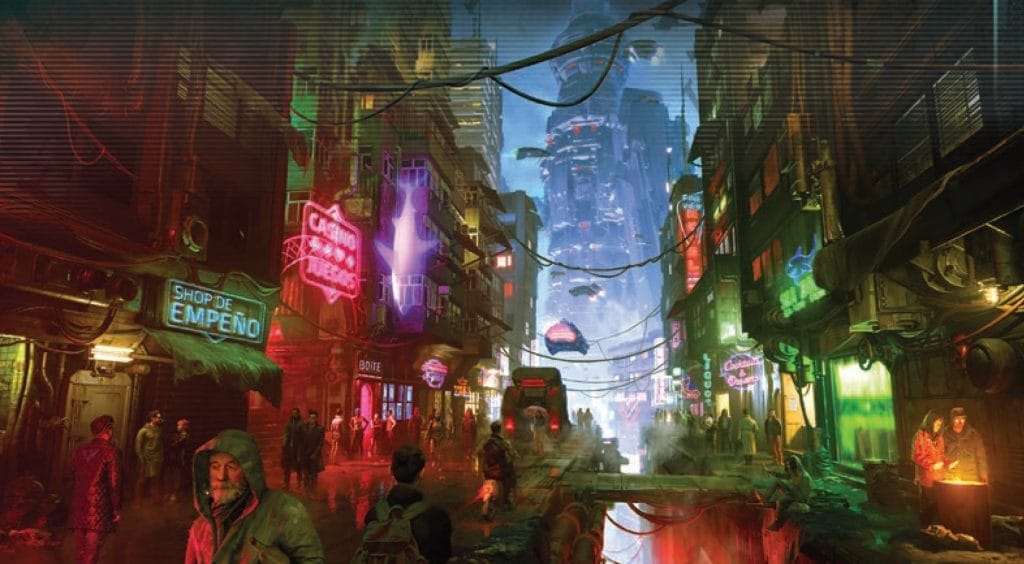
On The Tabletop
For our On the Tabletop playthrough, we used the free Genesys, Shadow of the Beanstalk scenario produced by FFG, Night on the Town and the pre-made characters. We played through the first part of the scenario, Happy Hour. Because the adventure is pre-made, it means there will be spoilers in the write up below. If you're interested in playing this scenario, then skip down to Player Thoughts. If you're thinking of running the adventure as a GM or your GM will run other adventures, then read-on through our play-through write up.As a test of the system, I gave myself a week to read the Genesys core rulebook, Shadow of the Beanstalk sourcebook and the scenario, Night on the Town. It's a pretty tight schedule for getting that much reading done, in terms of actually learning the rules and making scenario notes, but I wanted to set boundaries for future On The Tabletop RPG tests. I usually read other tabletop product rulebooks once before taking them to the table for our tests, but RPGs are a vastly different genre, and the player experience is directly linked to the GM's knowledge of the system and setting. I also didn't give the players their character sheets or any reference material prior to the game, so they were going in largely cold.
During the scenario we used 2 packs of Genesys dice, each player had a cheat sheet with the dice symbols/dice colors and also a cheat sheet for advantage/threat spending on rolls.
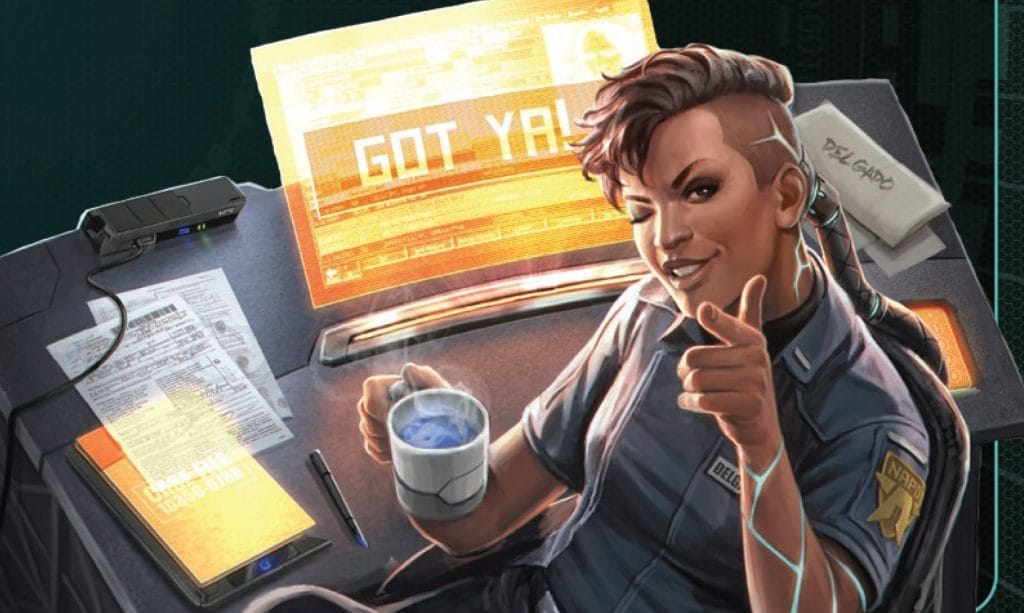
Night on the Town
For the adventure, Kit chose Harry, the human investigator, Kyla picked Zoey, the Tech/Hacker, Filippo wanted to play Tam, the biconically augmented Bounty Hunter and Ewan selected Vince, the Con Artist from the moon.
The group starts in a bar, their regular Friday meeting spot when Simon Leander, an unsavoury type that both Tam and Harry have had dealings with in the past comes in. After some awkward small talk, Simon gives Harry a very unusual hug and leaves sharply via a side exit.
Zoey and Harry spot a couple of rough types following Simon and follow into an alley. They find Simon pinned up against a wall by a man with a huge bionic arm. Harry tried to bluff, shouting 'NAPD!' This initially confuses the enemy minions, but their leader is quick to see through the ruse and orders the attack.
Harry failed the bluff action, but got enough advantage to give his allies a boost to all their rolls for the first round of combat.
The combat is brief, with Vince managing to disable the enemy leader’s bionic arm and Zoey throwing a stun grenade that failed to go off until shot later in the round. With the enemies blinded and taking a large amount of damage, they flee, leaving the group to check on Simon, who’s head had been crushed in the impact against the wall.
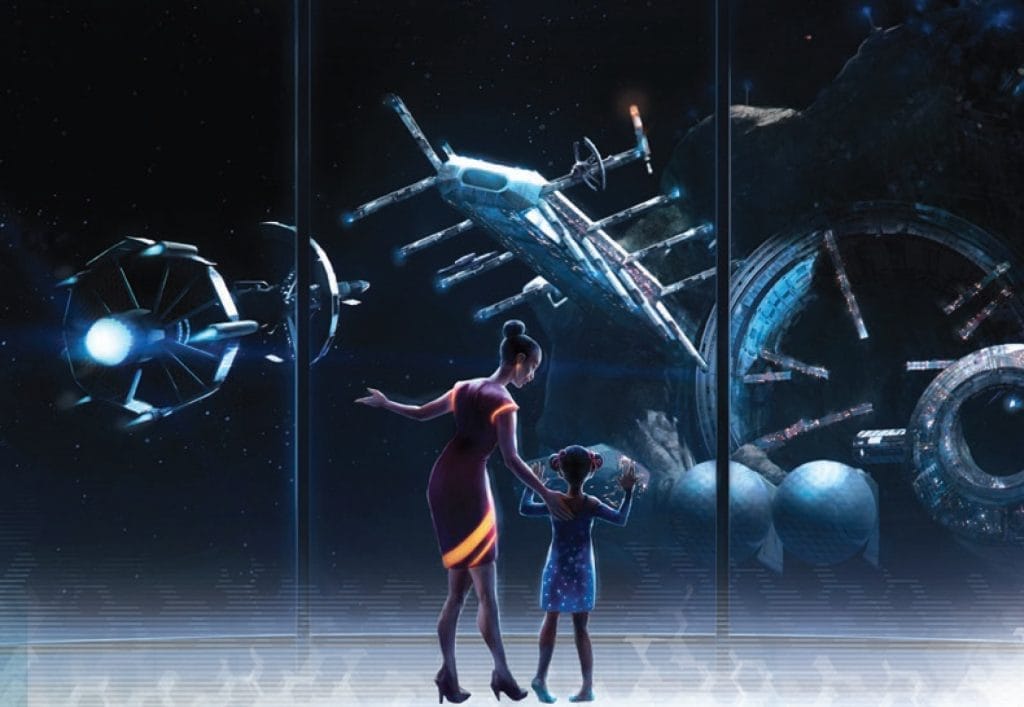
Simon was carrying a fake SEA ID (Space Elevator Authority) and an encrypted comms device. Both pointed to some illegal shenanigans going on. The group recognised that the thugs were from the gang known as the Los Scorpions. Zoey, feeling that something was off with the hug Simon gave Harry, tells him to check himself. Harry finds a memchip in his pocket, which must have been slipped there by Simon.
Zoey access the memchip and finds that it’s a program, but can’t tell what it’s for. Zoey does know where they can find out though, and the group bluff their way into an SEA office to access the chip.
After getting past the bored guards with a clever disguise by Vince, Zoey accesses an SEA computer and discovers that the memchip contains a smuggling program that will allow goods to be carried to and from the moon through the Beanstalk without being checked by the authorities. She also manages to add the group to the visitor access database for the office and access some petty accounts.
Just on the cusp of being detected in the network, and just as a security patrol enter the corridor outside the office, the group escape with the information they need.
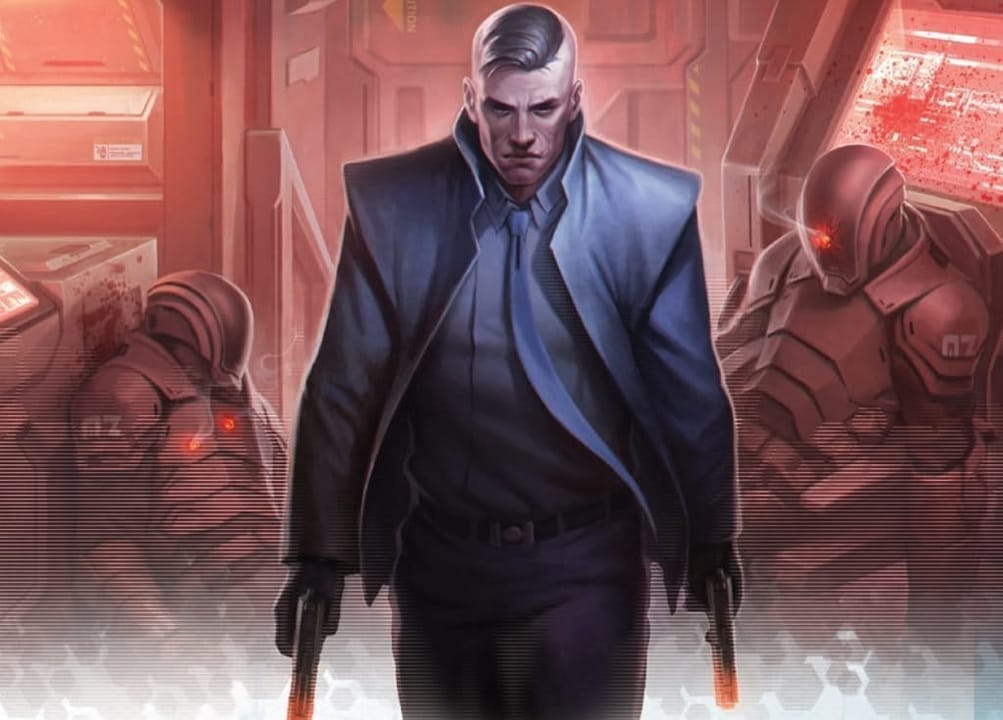
The group are contacted by a high-ranking member of 14K, another large gang. They organised the production of the smuggling program and want it, and are willing to pay for it.
The group establish an elite triple cross, arranging an exchange with the Los Scorpions and the 14K meeting before they plan to arrive. They also copy the program so they can sell to multiple bidders. Harry, not feeling good about the criminal underworld benefiting from anything, tips off the NAPD without the group knowing.
It doesn’t go as planned though, and when the group arrive only the 14K are there. The exchange is made and the Los Scorpions arrive at the same time as the NAPD, who then quickly flee. The 14K gang members evaporate into the darkness and the players are arrested. All except for Vince, who manages to escape with the exchange money.
Player Thoughts
[gallery columns="5" ids="264469,277982,285492,285782,285494"]Adam - The first thing I noticed about the Genesys and Shadow of the Beanstalk book was how amazing the artwork is throughout. Both books are also very well laid out, and fantastic looking products.
I’m a real fan of what the narrative dice system is trying to do, and the group interpretation works well on some tests. It does feel like it slows down minor tests though. Like testing to simply see if a character knows or remembers something. Rather than being a quick roll, it can end up needing interpreting, which sometimes slowed down play. For the more important rolls though, it works well, and getting the whole group involved in working out the narrative result can be fun.
I really like how they system links combat and social with netrunning, If handled well by the GM, which would take some planning, it could be very interesting and have a great deal of tension for the players.
I enjoyed running it, but coming into the system cold requires a lot of reading. I would suggest running the core Genesys system for a few sessions before adding in the Shadow of the Beanstalk sourcebook, just to ensure full system understanding to get the most of out the Android setting.
The Night on the Town scenario is a great introduction, very well produced and easy to run. The group were excited to play the second half of it.
Adam is the righteous leader of the On The Tabletop Team and is an experienced tabletop gamer. He has played physical and online CCGs to a very high competitive level. He also has a background in roleplaying, board and wargaming and has playtested and produced content for several companies. A veteran tabletop writer who's favourite games include Dark Souls the Card Game, The Legend of the Five Rings LCG, Shadespire and Bushido. You can read his work here on TechRaptor and follow his exploits on Twitter - @StealthBuda.
Kit - Coming from a background of Cyberpunk and Shadowrun I was excited to try this out. I'd elected for Harry, a grizzled ex cop turned private investigator whose Irish accent wavered throughout the night. I preface my opinion with the story was immersive and the GM did a great job of pulling us in, even for a one shot.
Sadly, my excitement dipped slightly when I saw it had a propriety dice system. I've never been a big fan, if you're using a cube to roll why not use a D6. In my opinion I was right to be disappointed in this case. The system felt overly clunky and with no real peril if you failed. This wasn't just the combat system but even interactions. The hacking system, in Shadowrun terms the matrix, seemed even more clunky and didn't have the smoothness of other game systems I've played.
As I said, the story itself was really immersive, lots of twists and felt we all really got into the characters motivations etc. However, I really felt that story could have been pulled into another more mature system.
Kit is the owner of ABZ Games, Aberdeen’s gaming community hub. He has been playing board/card/war/role-playing games for near on 25 years. Currently his favourite game is Wild West Exodus by Warcradle.
Kyla - Whilst I love playing this game with it's Android Cyberpunk setting, I felt like some plot elements - the 'Beanstalk', the SEA ('Space Elevator Authority'), and the computer hacking mechanics were so specific that it might be difficult to create homebrew content that doesn't accidentally clash or break the world. And so whilst pre-generated characters and storylines worked really well, I wonder if we'd have worked so well together as a team, or if the game would have been so strong, had we created our own characters and the GM written the story. The interwoven storylines and background of the pre-generated characters really added to our overall game experience and also gave us material to work from in terms of role-playing.
This was also my first time playing a Genesys game, and therefore my first time playing using the Narrative Dice System. I can see why the shift away from numbered dice was made to hopefully enhance the story aspect of the game, but at times I felt the game was too 'positively biased'. Even when you rolled poorly, the outcome never felt terrible as you often rolled advantage which you 'spent' on various actions to yield a more positive result. This at times felt like you were being railroaded, as without truly awful dice rolls, the storyline would never deviate too far away from the GM's intentions.
Overall, we had a fun session but I believe it was largely due to the creativity of the players at the table, given the material they had. I don't think the game mechanics, including the Narrative Dice System, improved the game in any significant way and our session could have possibly been more unpredictable had we used a traditional numbered dice system.
Kyla is a 3D Artist and VFX Compositor. She is also known around the UK convention scene for her costume and prop making work. She's been a regular DM and player of Dungeons & Dragons for the last 3 years, and when she's not busy writing her own homebrew campaigns she can be found playing Zombicide with friends. You can find her on Instagram at @HallowStudios, and on her website.
Ewan - I normally struggle with pen and paper rpgs but I found this one rather enjoyable. I think the way they've tried to add nuance with the different dice is a great idea, my only issue was I was struggling to tell some of the different symbols apart. That and there didn't seem to be enough negatives when something went wrong. What I learned is that in the end, evil always pays!
Ewan is severely visually impaired, which makes playing some games difficult, especially when there is a lot of small text on the board. Having his input is very important to us as it can be something that is overlooked in gaming. He's been gaming for a while and enjoys Talisman and Camelot. He has also played a few CCGs and is currently loving Warhammer Age of Sigmar Champions. He tries to get some wargames in when he can.
Filippo - Genesys Android is an innovative RPG. It is clearly addressed to a descriptive approach rather than combat-based dungeon crawl. Combat is possible, obviously, but as far as I have experienced it is not the main of the game.
Characters have many more skills and attributes that are meant to describe social interactions with other characters rather than combat-useful skills. Therefore you can persuade, coerce, understand surrounding environment and obviously navigate the web to perform hacking actions. Because the world of Android is based in a dystopian Cyberpunk future where the web (or the matrix?) can provide a second life to the people who cannot afford a decent life in the real world. Which is increasingly becoming ruled by megacorporations and the poor souls who are not part of the system are left in the slums. I am a big fan of Cyberpunk novels, films and books so I personally loved the theme.
Actions are scored by rolling a series of dice which do not have numerical values but “successes” and “failures” points. Successes are divided in 3 levels of “strength” and the same for failures. This mechanic is innovative and allows throwing a large numbers of dice every action needs to be determined which is always fun, however it leads to ambiguous results: what happens if I score a failure and 3 advantages? I fail the action but something good happens, it is not always clear how to resolve these outcomes and it feels like it is too open to interpretations, however I suspect a thorough review of the rules can clarify this mechanic. After all a role playing game is not meant to be competitive but fun, and the GM has overall control of the events so in doubt he can always decide the outcome.
Filippo is a Level 99 geek with D20 years of experience in all sort of gaming. From wargames (Infinity, Warhammer 40K), to RPGs (D&D), CCGs (Magic the Gathering, Pokemon, Doomtrooper, Hearthstone), board games (countless!) and video games. He is a science fiction buff, especially dystopian and Cyberpunk styles. He is also a miniature and scale modeller, painting mainly Mecha and Tanks to a competitive level and has won several prizes.
Several products were used in this article, the Genesys Core Rulebook, the Shadow of the Beanstalk sourcebook, Genesys dice and Adversary Decks were provided by Asmodee UK.
Have you played the Genesys RPG system? Which setting did you play? Are you an Android fan? What do you think of Shadow of the Beanstalk? What's your opinion on the unique Genesys dice or the narrative system? Let us know in the comments below.
Review Summary
Have a tip, or want to point out something we missed? Leave a Comment or e-mail us at tips@techraptor.net
